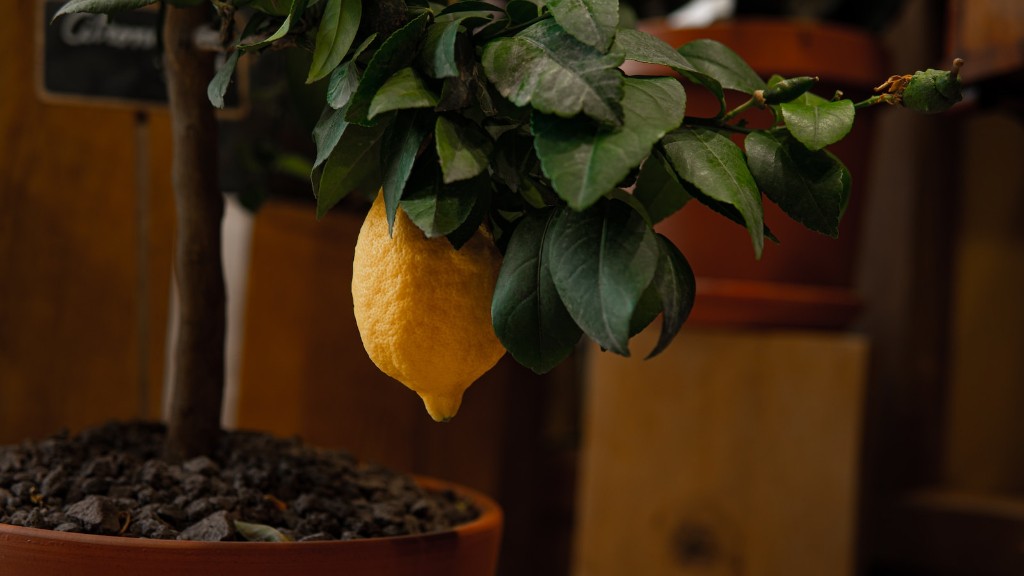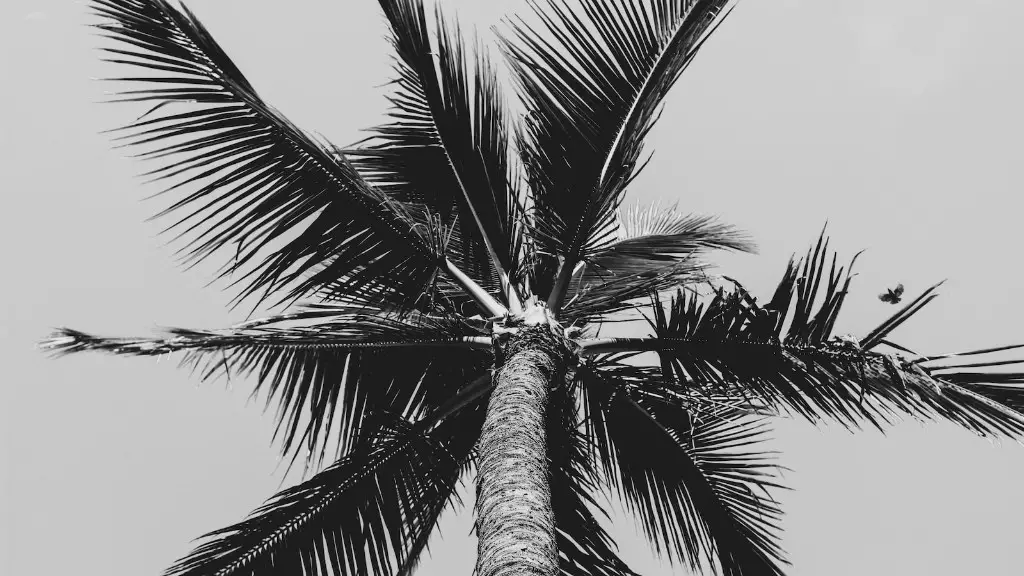Indoor palm trees are a popular choice for houseplants, but they can sometimes experience problems. If your indoor palm tree is turning yellow, it could be due to a lack of nutrients, excessive light, or too much water.
The most common reason for an indoor palm tree to turn yellow is due to a nutrient deficiency. Palms are heavy feeders and require regular fertilization to stay healthy. If your palm tree is not receiving the proper nutrition, it will begin to yellow. Another possible reason for yellowing could be due to too much or too little water. Palms need to be kept evenly moist and should never be allowed to dry out or sit in water. If you think your palm tree is suffering from a nutrient deficiency or watering issue, adjust your care accordingly and see if the yellowing improves.
How do I treat yellow leaves on my palm tree?
If your palm trees have yellow leaves due to nutritional deficiencies, you will need to fertilize them with a fertilizer that contains nitrogen, potassium, and magnesium in order to restore them to health. This will help to correct the nutrient imbalance and allow the trees to take up the necessary nutrients to stay healthy.
If you have a yellow palm leaf, unfortunately it cannot turn green again. This is due to the leaf being a drain on the plant, and eventually the palm will drop the leaf.
Should I cut off yellow palm leaves
Removing yellow fronds from a palm tree will actually push the nutritional deficiency up into the new growth. This could lead to the death of the palm. Therefore, only remove fronds that are totally brown.
If your palm has been having a bad time – pests, or root rot or whatever, it might be a good idea to either invest in a humidifier or put it in a more humid area of your home to help out the fronds a bit.
Do yellow leaves always mean overwatering?
Yellow leaves on a plant can indicate a number of different things, depending on the type of plant and what other symptoms the plant is showing. Overwatering, underwatering, mineral deficiency, temperature stress, and so on can all be causes. If you’re not sure what’s causing the yellowing, it’s best to consult with a gardening expert.
A dying palm tree can be a sad sight for any homeowner. But, with the right care, it is possible to revive your palm tree and help it thrive once again. Follow the steps below to properly care for your dying palm tree:
1. Add the right amount of water. Palm trees need a lot of water to survive, so make sure you are watering your tree regularly.
2. Use high-quality fertilizer. Fertilizer will help your palm tree get the nutrients it needs to thrive.
3. Keep fertilizer 2 ft away from roots. Fertilizer can be damaging to roots, so make sure to keep it at a safe distance.
4. Use high-quality soil only. Cheap soil can compact and damage roots, so only use high-quality soil for your palm tree.
5. Cut fronds after they are completely dead. Once fronds are dead, they can provide no more nutrients to the tree.
6. Don’t prune during hurricane season. Pruning during hurricane season can damage the tree and make it more susceptible to storms.
7. Plant palms trees at the right level. Make sure to plant your palm tree at the right depth so that the
What does an overwatered palm plant look like?
Overwatering your palm trees can cause a variety of problems. The most common signs of overwatering are drooping leaves, black spots on leaves and stems, mold on the surface of the soil, and yellowing leaves. If you notice any of these signs, it’s important to take action immediately to avoid further damage to your trees.
There are a few things that could be causing your palm tree to sick. It could be a lack of water, too much sun, or a pest infestation. If the top center stalks are turning brown and/or shriveling, it’s likely that your tree is not getting enough water. Make sure to water your palm tree regularly, and if you live in an area with a lot of sun, try to give it some shade. If you think there may be a pest infestation, you can contact a pest control company to get rid of the problem.
What does Epsom salt do for palm trees
Epsom salt is a magnesium sulfate compound that is often used to increase the magnesium content in soil for palm trees. Palm trees need high levels of magnesium for growth, and Epsom salt can help to provide this needed nutrient.
A new palm should be watered everyday on its first week, switch to every other day the following and then settle for 3 times a week on the third. Then water as normal for established plants. For more established palms, watering should be done only 2-3 times per week, and this is only in the absence of rainfall.
How can you tell if a palm tree is dying?
If you see any of the above mentioned signs, it is likely that your palm tree is dying or already dead. In some cases, the damage can be stopped and reversed, but it is important to act quickly. If you are unsure of what to do,contact a professional for help.
Mature palms in the landscape should be fertilized with 8-2-12 fertilizer which is a complete, granular, palm tree fertilizer, specially formulated for palms and containing all the essential elements and manganese: a mineral that helps prevent yellowing and necrosis between the leaf veins and a reduction in leaf size.
Should I mist my indoor palm plant
While your palm is growing, water it often. In hot, dry weather, mist spray the foliage several times a day to keep it cool and help deter pests. In autumn and winter, water less.
Hi!
Just wanted to remind you to keep the soil moist for your palm plants – they need a delicate balance of moisture and humidity. You can keep your palm plant moist by misting the leaves or placing them in a room with a humidifier. However, palm plants are susceptible to root rot when exposed to too much moisture, indicated by yellowing leaves.
Thanks!
Do indoor palm trees need sunlight?
It’s important to know that most indoor palms prefer the shade, and will suffer if they get any direct sunlight. This is why it’s important to place them in an area of your home that gets bright, indirect light. during the winter months, they may tolerate less light, but it’s still important to place them in a bright spot.
Nitrogen is an important element for plant growth and development. Nitrogen deficiency can lead to a number of problems including yellowing of leaves, reduced plant growth, and poor fruit and flower production. Potassium is another important element for plants and is involved in many processes including photosynthesis, water uptake, and nutrient transport. Potassium deficiency can also cause problems for plants including yellowing of leaves, reduced plant growth, and poor fruit and flower production.
Final Words
There are many potential reasons why your indoor palm tree is turning yellow. It could be due to a lack of nutrients, too much sun exposure, or excessive watering. If you suspect that your tree is not getting enough nutrients, you can try fertilizing it. If too much sun is the problem, you can try moving it to a shadier spot. If you think you are watering your tree too much, you can try letting the soil dry out more between waterings. If the problem persists, you may need to consult with a professional tree care specialist.
One possible reason your indoor palm tree is turning yellow is lack of sun. Palms are tropical plants and need lots of sunlight to stay healthy. If your palm is not getting enough sun, it will start to turn yellow. Another possible reason is over-watering. If you are watering your palm too much, the roots can start to rot, which will also cause the leaves to turn yellow. If you think either of these might be the problem, try giving your palm tree more sun or less water and see if that helps.



